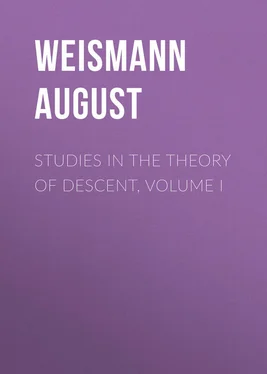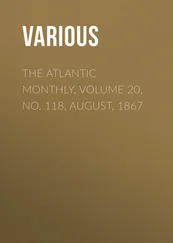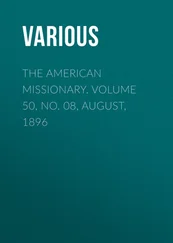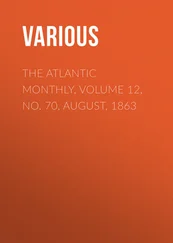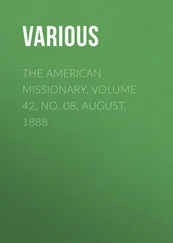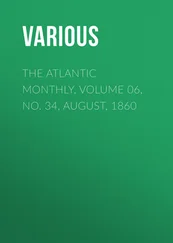August Weismann - Studies in the Theory of Descent, Volume I
Здесь есть возможность читать онлайн «August Weismann - Studies in the Theory of Descent, Volume I» — ознакомительный отрывок электронной книги совершенно бесплатно, а после прочтения отрывка купить полную версию. В некоторых случаях можно слушать аудио, скачать через торрент в формате fb2 и присутствует краткое содержание. Жанр: foreign_antique, foreign_prose, на английском языке. Описание произведения, (предисловие) а так же отзывы посетителей доступны на портале библиотеки ЛибКат.
- Название:Studies in the Theory of Descent, Volume I
- Автор:
- Жанр:
- Год:неизвестен
- ISBN:нет данных
- Рейтинг книги:4 / 5. Голосов: 1
-
Избранное:Добавить в избранное
- Отзывы:
-
Ваша оценка:
- 80
- 1
- 2
- 3
- 4
- 5
Studies in the Theory of Descent, Volume I: краткое содержание, описание и аннотация
Предлагаем к чтению аннотацию, описание, краткое содержание или предисловие (зависит от того, что написал сам автор книги «Studies in the Theory of Descent, Volume I»). Если вы не нашли необходимую информацию о книге — напишите в комментариях, мы постараемся отыскать её.
Studies in the Theory of Descent, Volume I — читать онлайн ознакомительный отрывок
Ниже представлен текст книги, разбитый по страницам. Система сохранения места последней прочитанной страницы, позволяет с удобством читать онлайн бесплатно книгу «Studies in the Theory of Descent, Volume I», без необходимости каждый раз заново искать на чём Вы остановились. Поставьте закладку, и сможете в любой момент перейти на страницу, на которой закончили чтение.
Интервал:
Закладка:
Since the discovery of this last fact a considerable number of similar cases have been established. Thus P. C. Zeller 3 3 “Über die Artrechte des Polyommatus Amyntas und Polysperchon .” Stett. ent. Zeit. 1849. Vol. x. p. 177–182. [In Kirby’s “Synonymic Catalogue of Diurnal Lepidoptera” Plebeius Amyntas is given as a synonym and P. Polysperchon as a var. of P. Argiades Pall. R.M.]
showed, by experiments made under confinement, that two butterflies belonging to the family of the ‘Blues,’ differing greatly in colour and marking, and especially in size, which had formerly been distinguished as Plebeius ( Lycæna ) Polysperchon and P. Amyntas , were merely winter and summer generations of the same species; and that excellent Lepidopterist, Dr. Staudinger, proved the same 4 4 “Die Arten der Lepidopteren-Gattung Ino Leach, nebst einigen Vorbemerkungen über Localvarietäten.” Stett. ent. Zeit. 1862. Vol. xxiii. p. 342.
with species belonging to the family of the ‘Whites,’ Euchloe Belia Esp. and E. Ausonia Hüb., which are found in the Mediterranean countries.
The instances are not numerous, however, in which the difference between the winter and summer forms of a species is so great as to cause them to be treated of in systematic work as distinct species. I know of only five of these cases. Lesser differences, having the systematic value of varieties, occur much more frequently. Thus, for instance, seasonal dimorphism has been proved to exist among many of our commonest butterflies belonging to the family of the ‘Whites,’ but the difference in their colour and marking can only be detected after some attention; while with other species, as for instance with the commonest of our small ‘Blues,’ Plebeius Alexis (= Icarus , Rott.), the difference is so slight that even the initiated must examine closely in order to recognize it. Indeed whole series of species might easily be grouped so as to show the transition from complete similarity of both generations, through scarcely perceptible differences, to divergence to the extent of varieties, and finally to that of species.
Nor are the instances of lesser differences between the two generations very numerous. Among the European diurnal Lepidoptera I know of about twelve cases, although closer observation in this direction may possibly lead to further discoveries. 5 5 [Eng. ed. W. H. Edwards has since pointed out several beautiful cases of seasonal dimorphism in America. Thus Plebeius Pseudargiolus is the summer form of P. Violacea , and Phyciodes Tharos the summer form of P. Marcia . See Edwards’ “Butterflies of North America,” 1868–79.]
Seasonal dimorphism occurs also in moths, although I am not in a position to make a more precise statement on this subject, 6 6 [Eng. ed. I learn by a written communication from Dr. Speyer that two Geometræ, Selenia Tetralunaria and S. Illunaria Hüb., are seasonally dimorphic. In both species the winter form is much larger and darker.] [ Selenia Lunaria , S. Illustraria , and some species of Ephyra ( E. Punctaria and E. Omicronaria ) are likewise seasonally dimorphic. For remarks on the case of S. Illustraria see Dr. Knaggs in Ent. Mo. Mag., vol. iii. p. 238, and p. 256. Some observations on E. Punctaria were communicated to the Entomological Society of London by Professor Westwood in 1877, on the authority of Mr. B. G. Cole. See Proc. Ent. Soc. 1877, pp. vi, vii. R.M.]
as my own observations refer only to butterflies.
That other orders of insects do not present the same phenomenon depends essentially upon the fact that most of them produce only one generation in the year; but amongst the remaining orders there occur indeed changes of form which, although not capable of being regarded as pure seasonal dimorphism, may well have been produced in part by the same causes, as the subsequent investigation on the relation of seasonal dimorphism to alternation of generation and heterogenesis will more fully prove.
Now what are these causes?
Some years ago, when I imparted to a lepidopterist my intention of investigating the origin of this enigmatical dimorphism, in the hope of profiting for my inquiry from his large experience, I received the half-provoking reply: “But there is nothing to investigate: it is simply the specific character of this insect to appear in two forms; these two forms alternate with each other in regular succession according to a fixed law of Nature, and with this we must be satisfied.” From his point of view the position was right; according to the old doctrine of species no question ought to be asked as to the causes of such phenomena in particular. I would not, however, allow myself to be thus discouraged, but undertook a series of investigations, the results of which I here submit to the reader.
The first conjecture was, that the differences in the imago might perhaps be of a secondary nature, and have their origin in the differences of the caterpillar, especially with those species which grow up during the spring or autumn and feed on different plants, thus assimilating different chemical substances, which might induce different deposits of colour in the wings of the perfect insect. This latter hypothesis was readily confuted by the fact, that the most strongly marked of the dimorphic species, A. Levana , fed exclusively on Urtica major . The caterpillar of this species certainly exhibits a well-defined dimorphism, but it is not seasonal dimorphism: the two forms do not alternate with each other, but appear mixed in every brood.
I have repeatedly reared the rarer golden-brown variety of the caterpillar separately, but precisely the same forms of butterfly were developed as from black caterpillars bred at the same time under similar external conditions. The same experiment was performed, with a similar result, in the last century by Rösel, the celebrated miniature painter and observer of nature, and author of the well-known “Insect Diversions” – a work in use up to the present day.
The question next arises, as to whether the causes originating the phenomena are not the same as those to which we ascribe the change of winter and summer covering in so many mammalia and birds – whether the change of colour and marking does not depend, in this as in the other cases, upon the indirect action of external conditions of life, i.e., on adaptation through natural selection. We are certainly correct in ascribing white coloration to adaptation 7 7 [In 1860 Andrew Murray directed attention to the disguising colours of species which, like the Alpine hare, stoat, and ptarmigan, undergo seasonal variation of colour. See a paper “On the Disguises of Nature, being an inquiry into the laws which regulate external form and colour in plants and animals.” Edinb. New Phil. Journ., Jan. 1860. In 1873 I attempted to show that these and other cases of “variable protective colouring” could be fairly attributed to natural selection. See Proc. Zoo. Soc., Feb. 4th, 1873, pp. 153–162. R.M.]
– as with the ptarmigan, which is white in winter and of a grey-brown in summer, both colours of the species being evidently of important use.
It might be imagined that analogous phenomena occur in butterflies, with the difference that the change of colour, instead of taking place in the same brood, alternates in different broods. 8 8 [A phenomenon somewhat analogous to seasonal change of protecting colour does occur in some Lepidoptera, only the change, instead of occurring in the same individual, is displayed by the successive individuals of the same brood. See Dr. Wallace on Bombyx Cynthia , Trans. Ent. Soc. Vol. v. p. 485. R.M.]
The nature of the difference which occurs in seasonal dimorphism, however, decidedly excludes this view; and moreover, the environment of butterflies presents such similar features, whether they emerge in spring or in summer, that all notions that we may be dealing with adaptational colours must be entirely abandoned.
Интервал:
Закладка:
Похожие книги на «Studies in the Theory of Descent, Volume I»
Представляем Вашему вниманию похожие книги на «Studies in the Theory of Descent, Volume I» списком для выбора. Мы отобрали схожую по названию и смыслу литературу в надежде предоставить читателям больше вариантов отыскать новые, интересные, ещё непрочитанные произведения.
Обсуждение, отзывы о книге «Studies in the Theory of Descent, Volume I» и просто собственные мнения читателей. Оставьте ваши комментарии, напишите, что Вы думаете о произведении, его смысле или главных героях. Укажите что конкретно понравилось, а что нет, и почему Вы так считаете.
